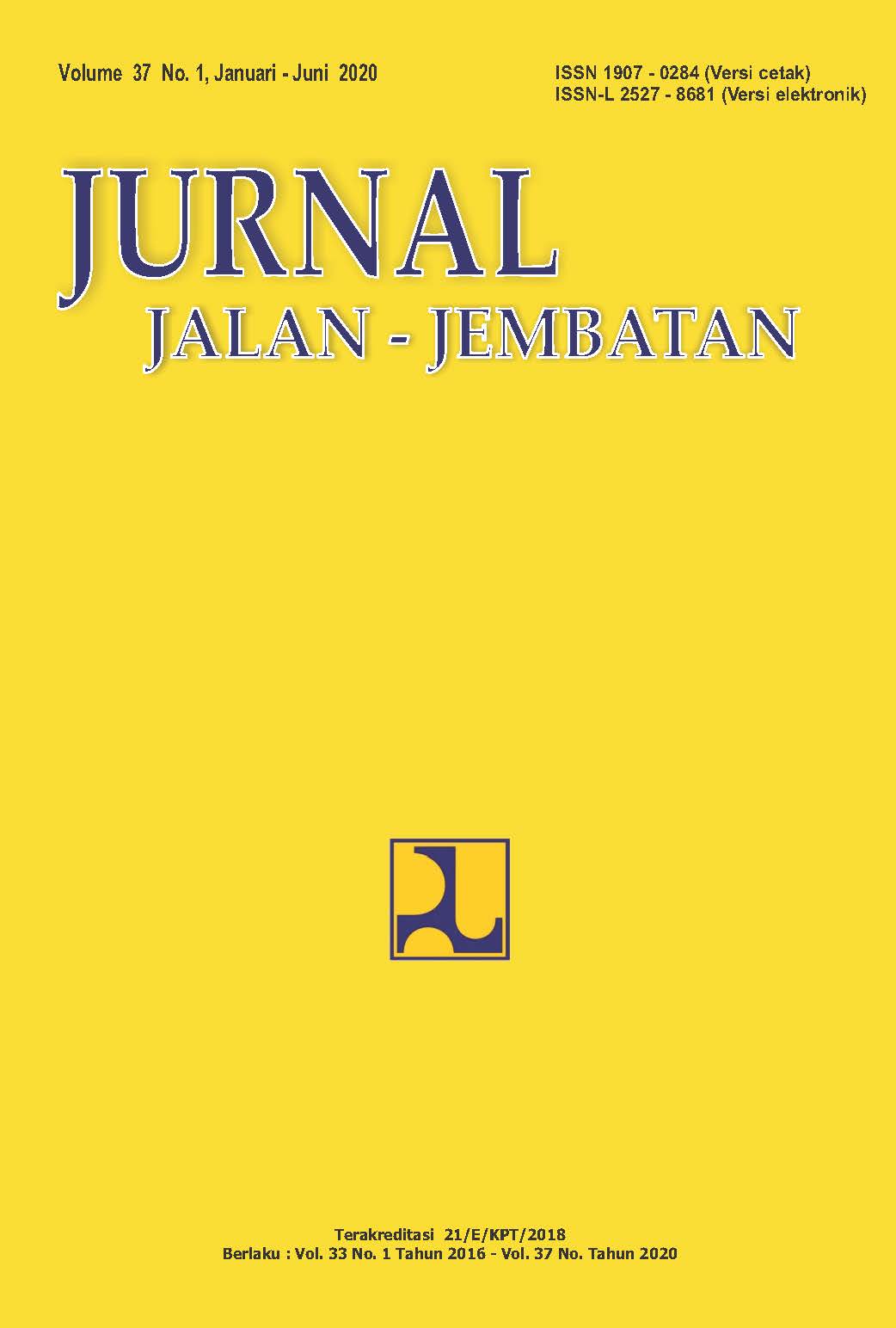CLAYEY SOIL STABILIZATION USING RICE HUSK ASH AND LIME EVALUATED BY CBR UNSOAKED
Main Article Content
Abstract
The quality of original soil in the Hambalang area of Citeureup - Bogor, virtualy shows low density mainly the unsoaked CBR value therefore unusable for subgrade stucture, and can cause road construction to be easily damaged. Soil stabilization conducted in this research is chemical stabilization using the selected mixture was rice husk ash (ASP) and lime. This test carried out with clayey by adding a mixture of rice husk ash and lime in a variation of clayey weight percentage of 0%, 4%, 8% and 12% of the dry weight of the soil, where the ratio between lime and rice husk ash is 50%: 50% and each mixture made as many as 3 samples. Water content in the original soil was 75.2 % decreased to 49.5% at 12% variation. The mixture of rice husk ash and lime ash makes the value of the liquid limit (LL), plastic limit (PL), and shrinkage limit (SL) decrease. This shows that the effect of rice husk ash and lime as added material in soil improvement has changed the technical properties of expansive clay for the better. CBR soil test increases significantly. CBR in the original soil of 1.9% increased to 8.0% in the rice ash husk plus lime mixture 4%, then experienced a significant increase in the 8% rice ash husk plus lime mixture that is 30.1%, and in the rice ash husk plus lime mixture 12% decreased to 10.7%. it can be concluded that the optimum undistrube CBR obtained at mixing with a percentage of 8% is 30.1%.
Keywords: Stabilization, road, clay soil, mixture, optimum, CBR
Article Details
Authors who publish in this journal agree to the following terms:
-
Authors retain copyright and grant the journal the right of first publication with the work simultaneously licensed under a Creative Commons Attribution License, which allows others to share the work with acknowledgment of the work's authorship and initial publication in this journal.
-
Authors may enter into additional contractual arrangements for the non-exclusive distribution of the journal's published version of the work (e.g., post it to an institutional repository or publish it in a book), with acknowledgment of its initial publication in this journal.
-
Authors are permitted and encouraged to post their work online (e.g., in institutional repositories or on their website) as it can lead to productive exchanges, as well as earlier and greater citation of the published work.
Each submitted manuscript must be accompanied by a "Manuscript Originality Statement" and a "Copyright Transfer Statement".

